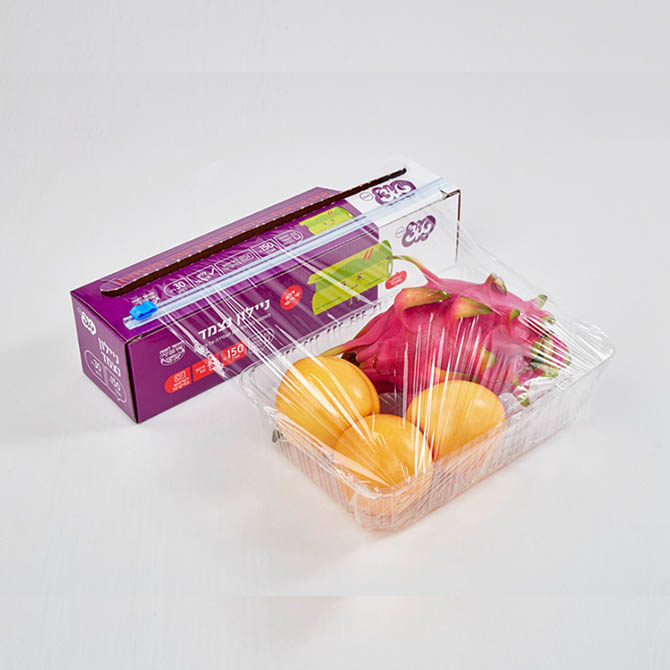Introduction
In today's fast-paced world, finding efficient and safe methods to preserve food has become a priority for both households and the food industry. One product that has gained significant attention in recent years is Polyethylene Food Wrap. This innovative packaging solution offers numerous benefits, making it a popular choice for consumers seeking to maintain food freshness and quality.
Understanding Polyethylene Food Wrap
Polyethylene food wrap is a thin, flexible plastic film made from polyethylene, a widely used plastic polymer known for its durability and versatility. Designed specifically for food preservation, this wrap creates a barrier that prevents moisture loss, protects against contaminants, and extends the shelf life of fresh food. Unlike other packaging materials, polyethylene food wrap is favored for its ability to conform to various food shapes and sizes, ensuring a tight seal that keeps food fresh for longer periods.
Key Features and Benefits
The packaging of polyethylene food wrap often comes in colorful boxes that not only enhance market appeal but also provide practical benefits. These boxes are designed with user convenience in mind, featuring built-in cutters or stretchers that make it easier for consumers to dispense and cut the film to the desired size. The colorful boxes also serve as a platform for displaying product information, including usage instructions, material composition, and size specifications, allowing consumers to make informed purchasing decisions.
One of the most significant advantages of polyethylene food wrap is its preservation performance. By creating a barrier against air and moisture, it effectively slows down the deterioration of food, helping to maintain its freshness, flavor, and nutritional value. This is particularly beneficial for perishable items such as fruits, vegetables, meats, and leftovers, reducing food waste and saving consumers money.
Market Applications and Consumer Appeal
Polyethylene food wrap finds extensive use in various market segments. In the retail sector, its attractive packaging and practical design make it a popular choice for supermarkets and food stores looking to attract customers and increase sales. The colorful boxes catch the eye on store shelves, drawing consumers' attention to the product and its benefits.
Within households, polyethylene food wrap has become an essential kitchen tool. Its convenience and ease of use make it ideal for busy families who need quick and effective solutions for food storage. The wrap can be easily cut to fit different container sizes and food shapes, accommodating everything from sandwiches to large leftovers. Its microwave safety, when properly labeled, adds to its versatility, allowing consumers to heat food without removing the wrap, saving time and effort.
Safety and Environmental Considerations
Despite its numerous benefits, concerns about the safety of polyethylene food wrap when in direct contact with food have been raised. However, manufacturers adhere to strict regulatory standards set by food safety agencies worldwide, ensuring that the materials used do not leach harmful substances into food. Polyethylene used in food wrap is typically free from hazardous chemicals like BPA and phthalates, which could potentially migrate into food and pose health risks. Migration studies conducted under normal use conditions consistently show minimal to negligible transfer of substances from the wrap to food, affirming its safety for consumer use.
In response to growing environmental awareness, some manufacturers are exploring eco-friendly alternatives to traditional polyethylene food wrap. These include biodegradable or compostable wraps made from renewable sources, which minimize environmental impact while maintaining food safety standards. As consumers become more conscious of their environmental footprint, these sustainable options are expected to gain popularity in the market.
Future Outlook
The demand for effective food preservation solutions continues to rise, driven by changing consumer lifestyles and the need to reduce food waste. Polyethylene food wrap, with its proven effectiveness, safety, and versatility, is likely to remain a staple in households and the food industry. Ongoing advancements in material technology and regulatory oversight will further enhance its performance and safety, ensuring it meets the evolving needs of consumers.
Conclusion
Polyethylene food wrap offers a practical and reliable solution for preserving food quality and freshness. When used correctly and sourced from reputable manufacturers, it poses minimal risk to food safety and provides significant benefits in terms of convenience, preservation, and cost-effectiveness. As the market continues to evolve, this versatile product is expected to adapt and remain a valuable tool in the ongoing effort to reduce food waste and maintain food security.




